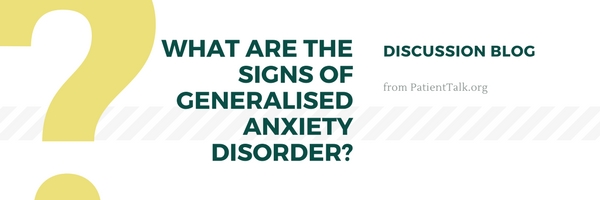Symptoms of generalised anxiety disorder
Generalised anxiety disorder (GAD) can affect you both physically and mentally.
How severe the symptoms are varies from person to person. Some people have only one or two symptoms, while others have many more.
You should see your GP if anxiety is affecting your daily life or is causing you distress.
Psychological symptoms of GAD
GAD can cause a change in your behaviour and the way you think and feel about things, resulting in symptoms such as:
restlessness
a sense of dread
feeling constantly “on edge”
difficulty concentrating
irritability
Your symptoms may cause you to withdraw from social contact (seeing your family and friends) to avoid feelings of worry and dread.
You may also find going to work difficult and stressful, and may take time off sick. These actions can make you worry even more about yourself and increase your lack of self-esteem.
Physical symptoms of GAD
GAD can also have a number of physical symptoms, including:
tiredness
a noticeably strong, fast or irregular heartbeat (palpitations)
muscle aches and tension
trembling or shaking
excessive sweating
shortness of breath
stomach ache
feeling sick
difficulty falling or staying asleep (insomnia)
Anxiety triggers
If you’re anxious because of a specific phobia or because of panic disorder, you’ll usually know what the cause is.
For example, if you have claustrophobia (fear of confined spaces), you know that being confined in a small space will trigger your anxiety.
However, if you have GAD, it may not always be clear what you’re feeling anxious about. Not knowing what triggers your anxiety can intensify it and you may start to worry that there’s no solution.
